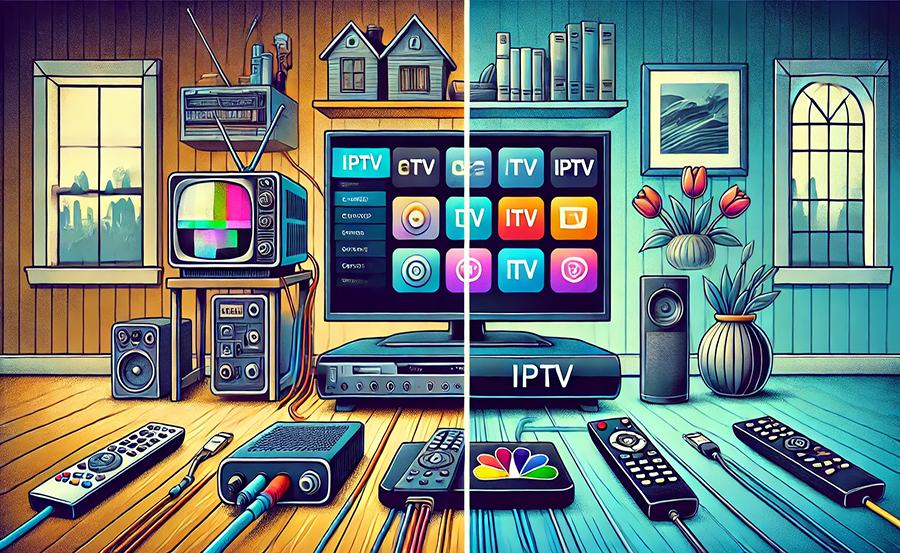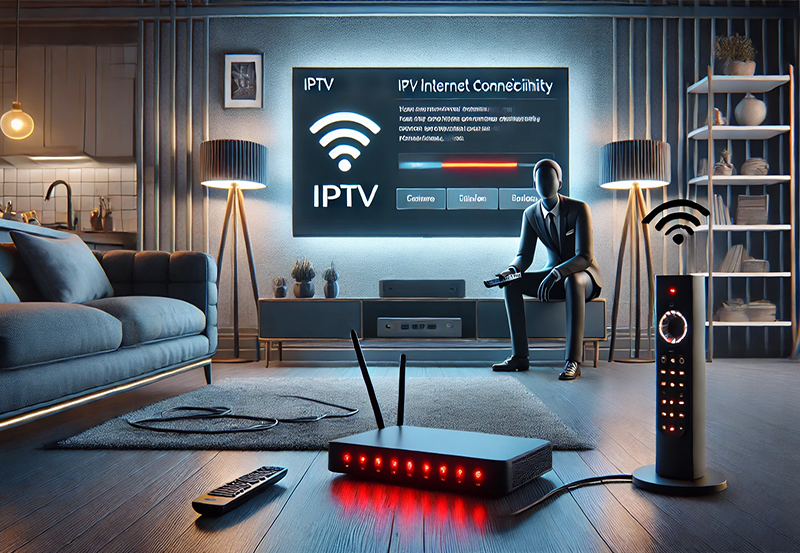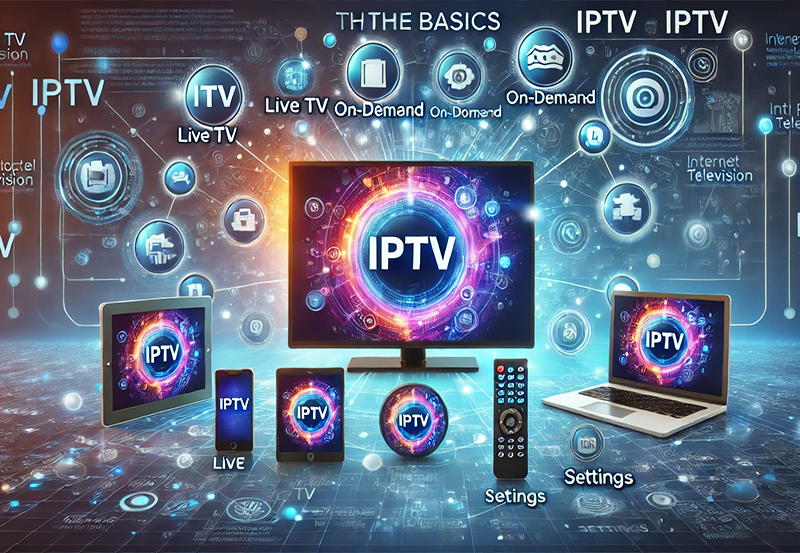In today’s digital era, the demand for high-quality visual content is growing exponentially. As viewers continue to seek the best possible viewing experience, the debate between IPTV and traditional cable has come to the forefront. But, what sets IPTV apart in delivering superior picture quality? Let’s delve into the insights that could redefine your perspective on TV entertainment.
The Rise of IPTV: A New Era of Television
Internet Protocol Television, better known as IPTV, is reshaping how we consume content. Unlike cable, which relies on satellite signals or fiber optics, IPTV uses an internet connection to stream live TV. This fundamental difference not only influences the accessibility of content but also directly impacts the quality of what you’re watching.
Thanks to the intricate delivery mechanism, IPTV can distribute high-definition and even ultra-high-definition content with remarkable clarity. This technology is designed to utilize the full bandwidth of your internet connection, offering unparalleled picture sharpness that’s hard to match with traditional cable services.
Smart Insight:
Unlock premium content with Buy IPTV online, offering access to global channels at your fingertips.
Moreover, the adaptability of IPTV technology with platforms like Roku enhances user experience, facilitating seamless integration into your existing home entertainment setup. IPTV on Roku is gaining traction for its convenience and the superior picture quality it offers, without the interruptions often associated with satellite or cable networks.
Understanding IPTV: Live TV Streaming Crucial Elements
IPTV delivers content directly to your device using internet protocol, which means data packets are sent over your broadband, allowing for high-resolution streaming without the typical delays of cable transmission. This robust technology ensures live TV streaming is fluid and uninterrupted, paving the way for a higher quality viewing experience.
The Expert’s Guide to IPTV Enjoyment emphasizes the importance of connection speed and stability to maximize IPTV’s potential. A stable, high-speed connection minimizes buffering, which is a common issue with traditional cable broadcasts, especially during peak viewing times.
The underlying infrastructure of IPTV allows broadcasters to offer channels with increased bitrates, leading to more detail and sharper images. While cable providers might compress signals to manage bandwidth, leading to a loss in quality, IPTV can maintain higher data rates necessary for crystal-clear content.
Comparing Formats: IPTV Versus Cable
Understanding how IPTV formats differ from cable can shed light on the advantages of internet-based television. While cable often compresses TV signals, IPTV maintains greater pixel integrity, which is crucial for delivering superior picture quality.
- Compression Techniques: IPTV usually implements advanced codecs that offer better image retention and quality.
- Flexibility in Resolution: IPTV can effortlessly adjust to various resolutions without significant loss of picture quality.
- Latency and Responsiveness: Enhanced protocols reduce latency, offering a near-instantaneous response that’s often absent in cable services.
Technical Advantages: Inside IPTV’s Framework
One of the critical aspects of IPTV’s superior quality is its infrastructure. Its reliance on the latest internet technologies allows IPTV to dodge the typical constraints that limit cable picture fidelity. With the scalability of bandwidth in modern networks, IPTV can deliver consistently high-quality broadcasts, accommodating higher bitrates.
Another pivotal factor is how IPTV makes use of multicast signals. Unlike unicast (one-to-one) transmissions typical of cable, multicast allows for one-to-many transmissions, reducing the burden on network bandwidth and enhancing picture quality.
User Experience: IPTV Usability and Picture Quality
When it comes to user convenience, IPTV offers a leg up on cable TV. Its integration with various devices such as smart TVs, tablets, and apps on streaming devices like Roku simplifies the access process, allowing for a more flexible viewing experience. This adaptability also contributes to the picture quality, as IPTV can adjust to the capabilities of the device used, ensuring optimized playback.
With IPTV on Roku, users can easily browse live TV channels, record content, and even watch on-demand movies with a few clicks, all while enjoying consistent high-quality visuals. The Expert’s Guide to IPTV Enjoyment enlightens users on how to configure these settings for the best outcome.
Viewing Options and Customization
Image and video adjustments on IPTV can be customized meticulously to fit personal preferences. From contrast enhancements to resolution tweaks, IPTV offers a plethora of settings that empower users to tailor their viewing experience precisely to their tastes, something cable does not typically offer.
Additionally, the dynamic range and color calibration settings in IPTV services bring out vibrant, true-to-life colors and deep contrasts, making every viewing experience visually spectacular.
Real-World Benefits: Why IPTV Outshines Cable
The transition to IPTV from cable is not just about improved picture quality; it’s also about the broader ecosystem and user empowerment. The ability to watch what you want, when you want, without sacrificing image fidelity is a game-changer for many.
Moreover, the integration of social sharing and interactive features in many IPTV platforms adds a layer of engagement that cable cannot compete with. Viewers can comment, share, and engage with content, all while enjoying TV in stunning high definition.
Price and Value Discussion
It’s worth noting that IPTV can be more cost-effective in the long run. By offering more flexible subscription models and the ability to choose specific packages better tailored to viewing habits, users often find IPTV to provide more value for money compared to traditional cable lines.
This financial advantage, along with superior picture quality, fosters an ever-growing migration towards IPTV, sparking interest from users seeking more from their television services.
Common Queries: IPTV Picture Quality FAQs

Does IPTV Require a Special TV to Get Better Picture Quality?
No, IPTV works with any television that has internet connectivity or with devices like Roku that facilitate streaming. However, using a high-definition or smart TV can enhance the experience further, ensuring you can take full advantage of the available high-resolution content.
Can Weather Affect IPTV Picture Quality?
Unlike satellite TV, IPTV is not directly affected by weather conditions because it uses your internet connection. As long as your internet remains stable, your IPTV picture quality should be unaffected by environmental factors.
How Does Internet Speed Impact IPTV Quality?
Internet speed is crucial for IPTV quality. Higher speeds allow for better picture quality because the data packets are delivered more efficiently. A minimum of 5 Mbps is recommended for HD content, while 25 Mbps or more is ideal for 4K streaming.
Why is IPTV Picture Quality Better Than Cable?
IPTV typically delivers higher bitrate streams compared to cable, allowing for less compression and retaining better image detail. Furthermore, the use of advanced codecs in IPTV ensures enhanced color accuracy and sharper images.
What Equipment is Needed to Enjoy IPTV?
To enjoy IPTV, you’ll need a reliable internet connection, a compatible device such as a smart TV, smartphone, or streaming box (e.g., Roku), and a subscription to an IPTV service.
The dynamic shift from traditional cable to IPTV offers an enticing promise of superior picture quality, enhanced flexibility, and unmatched convenience. Embrace the future of television with IPTV and transform your viewing experience beyond what cable could ever offer.
Smart TV Streaming: Installing M3U Links on Samsung Devices





